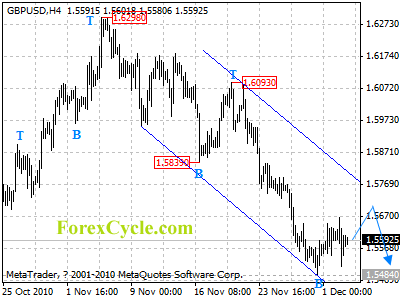By GCI Forex Research
Fundamental Outlook at 0800 GMT (EDT + 0400)
USD
FX markets were relatively quiet during the Asia session, and the price action was subdued. EURUSD traded 1.3188-1.3233, USDJPY 83.96-83.56. Earlier, some better US data helped push US equities higher, and the 10y Treasury yield breached 3% for the first time since July. A positive pending home sales print broke a recent string of disappointing housing data. Although initial jobless claims were slightly higher than consensus, the four-week average continued to drop. Philadelphia Fed President Plosser, a voter in 2011, was not supportive of QE2 prior to the decision and said he remains skeptical as to how much of a stimulative effect we might see. Both Plosser and St Louis Fed President Bullard, a 2010 voter, said the Fed could adjust the QE2 program in both directions depending on data. Bullard, though, maintained his constructive view on QE2 as he said the program should spur increased activity in 6 to 12 months and that the recent rise in yields does not mean QE2 is failing.
Our team of analysts remain constructive on the dollar over the short and medium term as a solution for Eurozone problems remains elusive, and as our analysts expect an above-consensus payrolls print today.
EUR
The euro stayed supported during the Asia session after yesterday’s volatile price action in and around the ECB’s press conference. The ECB’s policy decision itself was in line with what most informed observers had expected, and three-month fully-allotted liquidity will continue to be provided into Q1. The euro sold-off initially as newspaper articles had fuelled expectations in some quarters that further extraordinary measures to support European sovereign bond markets might be announced. The euro soon rebounded sharply afterwards though, amid media reports that the ECB had begun heavily buying sovereign bonds.
S&P said it may cut Greece’s BB+ long-term credit rating some time in the next three months. S&P placed the rating on credit watch negative citing the risk that Greece might need funding after 2013 from the newly-proposed European Stability Mechanism.
As expected, Eurozone GDP growth slowed to +0.4% q/q. Whilst exports slowed substantially, they are likely to benefit from a weaker euro going forward, and domestic demand remains strong.
CHF
Whilst Q2 GDP was revised down significantly, figures for Q3 showed a solid performance by the Swiss economy, as it grew by 0.7% (Q/Q) and 3.0%(Y/Y). CPI data is due and our European economists expect it will remain in positive territory.
CAD
Canadian labour data is due and consensus is for an increase in the net change of employment to the tune of +19.8k, and an unchanged unemployment rate of 7.9%. But more importantly for USDCAD will be the US labour data and a good print there could see USDCAD push lower as a recovering US economy is supportive for Canada as investors look to higher-beta assets.
TECHNICAL OUTLOOK
USDJPY stalled at 84.41.
EURUSD BEARISH Pullback from 1.4282 found support at 1.2969, scope for 1.2796 next. Resistance at 1.3354.
USDJPY BULLISH Stalled at 84.41; breach of the level would expose 85.40 reaction high. Initial support at 82.79.
GBPUSD BEARISH Sell-off from 1.6299 found support at 1.5485; move below the level would expose 1.5297. Near-term resistance at 1.5773.
USDCHF BULLISH Next big resistance lies at 1.0183. Near-term support at 0.9926.
AUDUSD BEARISH Recovery eyes 0.9818 resistance but overall outlook is bearish. Expect losses to target 0.9537 and 0.9477 next.
USDCAD BEARISH Abrupt fall through 1.0076 brings focus on the 0.9978/31 support zone. Resistance at 1.0190.
EURCHF BEARISH While resistance at 1.3229 breakout low holds, expect losses to target 1.2933 and 1.2766 next.
EURGBP BEARISH Focus is on 0.8329; a break here would expose 0.8202. Resistance at 0.8564.
EURJPY BEARISH Decline through 108.35 and 107.73 would open up the way towards 105.44 key low. Near-term resistance at 111.98.
Forex Daily Market Commentary provided by GCI Financial Ltd.
GCI Financial Ltd (”GCI”) is a regulated securities and commodities trading firm, specializing in online Foreign Exchange (”Forex”) brokerage. GCI executes billions of dollars per month in foreign exchange transactions alone. In addition to Forex, GCI is a primary market maker in Contracts for Difference (”CFDs”) on shares, indices and futures, and offers one of the fastest growing online CFD trading services. GCI has over 10,000 clients worldwide, including individual traders, institutions, and money managers. GCI provides an advanced, secure, and comprehensive online trading system. Client funds are insured and held in a separate customer account. In addition, GCI Financial Ltd maintains Net Capital in excess of minimum regulatory requirements.
DISCLAIMER: GCI’s Daily Market Commentary is provided for informational purposes only. The information contained in these reports is gathered from reputable news sources and is not intended to be U.S.ed as investment advice. GCI assumes no responsibility or liability from gains or losses incurred by the information herein contained.





